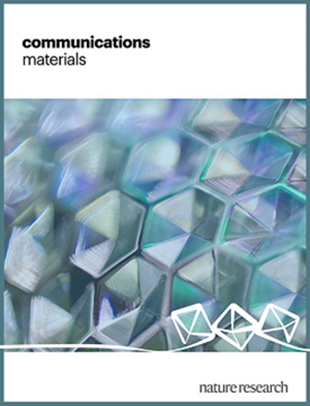Automated chain architecture screening for discovery of block copolymer assembly with graph enhanced self-consistent field theory
IF 9.6
Q1 MATERIALS SCIENCE, MULTIDISCIPLINARY
引用次数: 0
Abstract
The diverse chain architectures of block copolymers makes them important for exploring new self-assembly, but poses significant challenges for identifying the stability windows of desired mesophases within the vast parameter space. Here, we present an automated workflow for screening chain architectures to discover new self-assembly. Utilizing graph-enhanced self-consistent field theory complemented by a scattering-based identification strategy, our approach enables the automated computation of arbitrary chain architectures and their phase behavior. This framework successfully identifies stable windows for a novel PtS phase in AB-type block copolymer melts, with two distinct chain architectures emerging from the screening process. Our findings demonstrate the utility of this method in stabilizing desired self-assembly and exploring new mesophases. The flexibility of our approach allows for straightforward extension to multi-species and multi-component systems and further integration with metaheuristic optimization techniques to enhance its potential for materials design. Block copolymers have diverse chain architectures which self-assemble in many ways makes it difficult to identify the stability windows of the mesophases. Here, an automated workflow using graph-enhanced self-consistent field theory allows for computation of arbitrary chain architectures and their phase behavior.

基于图增强自洽场理论的嵌段共聚物装配链结构自动筛选
嵌段共聚物的不同链结构使得它们对于探索新的自组装很重要,但对于在广阔的参数空间中确定所需中间相的稳定性窗口提出了重大挑战。在这里,我们提出了一个筛选链结构以发现新的自组装的自动化工作流程。利用图形增强的自一致场理论和基于散射的识别策略,我们的方法能够自动计算任意链结构及其相位行为。该框架成功地确定了ab型嵌段共聚物熔体中新型PtS相的稳定窗口,筛选过程中出现了两种不同的链结构。我们的发现证明了这种方法在稳定期望的自组装和探索新的中间相方面的实用性。我们方法的灵活性允许直接扩展到多物种和多组分系统,并与元启发式优化技术进一步集成,以增强其材料设计的潜力。嵌段共聚物具有多种自组装方式的链结构,使得中间相的稳定性窗口难以确定。在这里,使用图增强自一致场理论的自动化工作流允许计算任意链架构及其相位行为。
本文章由计算机程序翻译,如有差异,请以英文原文为准。
求助全文
约1分钟内获得全文
求助全文
来源期刊

Communications Materials
MATERIALS SCIENCE, MULTIDISCIPLINARY-
CiteScore
12.10
自引率
1.30%
发文量
85
审稿时长
17 weeks
期刊介绍:
Communications Materials, a selective open access journal within Nature Portfolio, is dedicated to publishing top-tier research, reviews, and commentary across all facets of materials science. The journal showcases significant advancements in specialized research areas, encompassing both fundamental and applied studies. Serving as an open access option for materials sciences, Communications Materials applies less stringent criteria for impact and significance compared to Nature-branded journals, including Nature Communications.
 求助内容:
求助内容: 应助结果提醒方式:
应助结果提醒方式:


